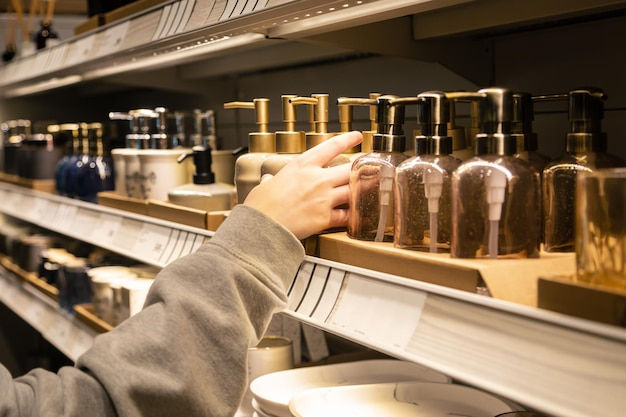The Role of Beauty in Self-Expression and Identity
- Rajendra Raj
- May 28
- 4 min read
Beauty has long served as a tool of self-expression, woven deeply into how we present ourselves to the world and how we understand our identity. From the bold colors of tribal face paint to the sleek contours of modern makeup, the way we choose to enhance or embrace our natural features reveals more than just aesthetic preference—it tells a story. In today’s dynamic world, beauty isn’t about fitting into a mold; it’s about breaking out of one. It’s about autonomy, authenticity, and emotional honesty.

Beauty as a Language Without Words
Whether we’re conscious of it or not, beauty choices act as non-verbal cues. The eyeliner we apply, the scent we wear, or the hairstyle we choose—all communicate aspects of who we are, how we feel, or who we aspire to become. Just like clothing or body language, our grooming rituals are intimate expressions of the self.
For many people, especially in marginalized communities, beauty becomes an empowering declaration of identity. Bold lipstick can be a form of protest, natural hair a political act, or minimalist makeup a celebration of one’s raw truth. Beauty isn't frivolous; it’s a form of narrative.
Cultural Influence and Personal Identity
Across the globe, cultural traditions shape beauty ideals and rituals. In Japan, geishas used white face makeup as a sign of elegance. In parts of Africa, intricate hair braiding signifies community, age, or social status. Beauty practices reflect cultural pride and continuity, passed down through generations.
In modern, multicultural societies, people often fuse traditional elements with contemporary aesthetics, creating hybrid beauty expressions. This blending of old and new helps maintain cultural roots while exploring modern identity. It also highlights how beauty can be fluid, evolving, and inclusive.
Mental Health and the Power of Ritual
Beauty routines, whether elaborate or simple, can offer therapeutic benefits. The repetitive motion of skincare, the quiet focus of applying makeup, or even the moment of choosing a lip balm can act as mindfulness rituals. They ground us in our bodies, provide a sense of control, and foster confidence.
Rather than being superficial, beauty rituals often support emotional wellness. They offer a moment of self-care amid busy schedules or personal challenges. It’s not just about looking good—it’s about feeling good, and sometimes, that's the biggest step toward healing or resilience.
Gender, Beauty, and Breaking the Binary
As society becomes more inclusive, beauty norms are being rewritten. Makeup is no longer reserved for women. Skincare isn’t just marketed to one gender. This shift is giving people across the gender spectrum permission to explore and embrace beauty on their own terms.
For non-binary or gender-nonconforming individuals, beauty practices can be powerful tools in expressing identity. Whether it’s wearing nail polish, contouring, or growing out facial hair, these choices reflect agency and self-recognition. Beauty has become a space of freedom, not restriction.
Skincare and the Movement Toward Natural Beauty
A notable trend in beauty’s role in self-expression is the growing embrace of natural skincare. Consumers are choosing transparency, authenticity, and health over heavy cosmetic enhancements. There’s a shift toward celebrating real skin, with its unique textures and tones, and moving away from unrealistic airbrushed standards.
Holistic and natural skincare doesn’t just support healthy skin—it supports self-acceptance. It's a message that says, “I am enough as I am.” If you’re seeking practical, honest ways to care for your skin while staying true to yourself, you might find valuable insights through natural skincare advice at xe-soft.com, where simplicity meets empowerment.
Technology and the Future of Beauty Expression
Technology is also expanding how we engage with beauty. Augmented reality apps let us preview different makeup styles. AI-powered skin assessments recommend personalized routines. These tools empower users with knowledge and allow for experimentation without commitment.
While tech may seem impersonal, it can actually support greater personalization and accessibility. Virtual makeup try-ons and tele-dermatology services are breaking down barriers, giving people in remote or underserved areas the ability to explore their beauty identity with confidence.

Beauty, Identity, and Aging
As we age, our relationship with beauty can shift. What once defined us might no longer resonate. But that’s part of the journey. Embracing evolving beauty standards and redefining what self-expression looks like in different life stages can be incredibly empowering.
Instead of resisting change, many are choosing to celebrate aging as a part of their beauty identity—graying hair, fine lines, and all. Beauty becomes more about radiance, character, and vitality than perfection.
Conclusion: Beauty Is a Mirror of the Soul
Ultimately, beauty is not just about the outer layer—it’s a reflection of the inner self. It’s about the freedom to explore, express, and evolve. Whether you find your confidence through a red lip, a bare face, or a nourishing skincare routine, what matters is that it feels true to you.
In embracing beauty as self-expression, we reject the idea of one-size-fits-all standards. We welcome individuality, culture, growth, and emotion into our routines. And for those navigating their own beauty journey, especially with skin health in mind, seeking trustworthy and gentle practices like those found in natural skincare advice at xe-soft.com can be a grounding place to start.




Comments